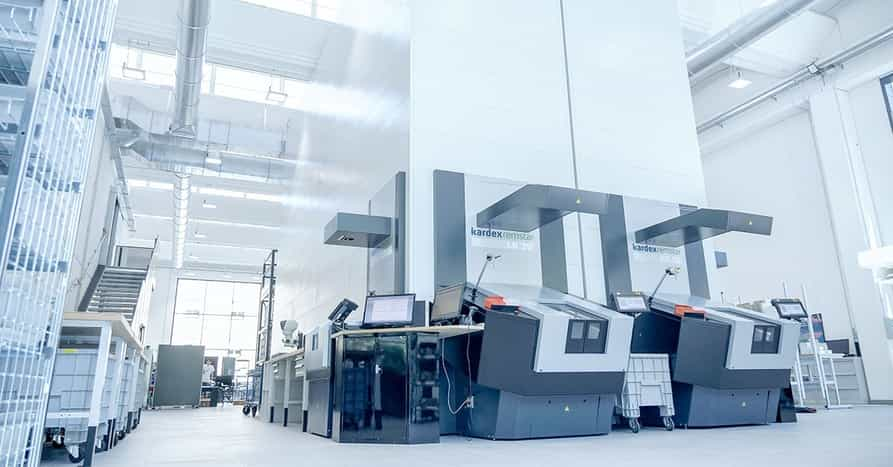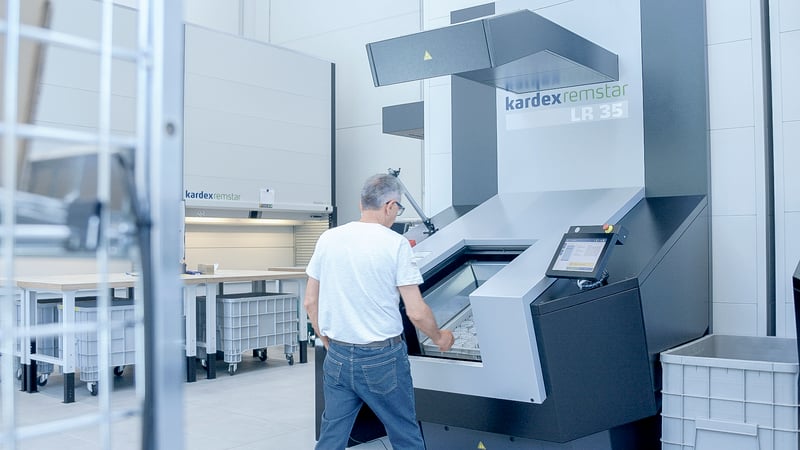In the world of warehouse automation, two leading technologies have emerged as key contenders: the Vertical Buffer Module (VBM): Kardex Compact Buffer by Kardex and the Robotic Picking System: Perfect Pick System by OPEX. Both systems offer various advantages, but determining which one is right for your warehouse depends on the size and throughput requirements of your application combined with your desired level of automation and budget. In this blog post, we'll compare the Kardex Compact Buffer and the Opex Perfect Pick, examining their differences and helping you determine which solution best suits your warehouse needs.
Kardex Compact Buffer Overview
The Kardex Compact Buffer is a Vertical Buffer Module that utilizes industry-standard European totes for storing and transporting items. Its primary advantages include its suitability for smaller warehouses and its ability to integrate with fully automated systems. The Kardex Compact Buffer is an ideal choice for smaller to mid-tier warehouse and distribution centers that don't require extremely high throughput.
See how the VBM works in this video: Kardex Compact Buffer - Quick & Efficient Picking
Opex Perfect Pick Overview
The Opex Perfect Pick is a robotic picking system designed for high-speed order picking in larger warehouse and distribution centers. It utilizes a proprietary tote size and can accommodate a higher number of totes per aisle. While more expensive than the Kardex Compact Buffer, the Opex Perfect Pick offers higher throughput and greater tote/SKU capacity.
Comparison: Kardex Compact Buffer vs Opex Perfect Pick
Application Size & Throughput Requirements: The Kardex Compact Buffer is best suited for warehouse and distribution centers with up to 25,000 SKUs or 10,000 totes and applications requiring throughput of 250-500 lines per hour. On the other hand, Opex Perfect Pick is better for large-scale operations (over 25,000 SKUs or over 10,000 totes) with higher throughput requirements (greater than 500 lines per hour).
Another consideration when deciding between the two systems is tote compatibility. The Kardex Compact Buffer uses industry-standard European totes, while the Opex Perfect Pick employs a proprietary tote size.
Additionally, the Opex Perfect Pick offers system redundancy, as it can accommodate multiple robots per aisle, ensuring continued operation even if one robot fails. In comparison, the Kardex Compact Buffer relies on a single mast per aisle, which means that system downtime occurs if the mast fails.
Automation level: The Kardex Compact Buffer is a more flexible solution. It can be integrated as a semi-automated or fully automated system, with the ability to connect to conveyors, AGVs, or AMRs for automatic tote handling. In contrast, the Opex Perfect Pick is a semi-automated system, requiring human intervention for picking.
Budget: The Opex Perfect Pick has a higher cost per aisle due to its larger size and higher throughput capabilities. However, this level of investment may not be necessary for smaller to mid-tier warehouse and distribution centers that can benefit from the more cost-effective Kardex Compact Buffer.
Kardex Compact Buffer or Opex Perfect Pick - How To Choose?
Choosing between the Vertical Buffer Module (VBM): Kardex Compact Buffer and the Robotic Picking System: Perfect Pick System by OPEX comes down to the size and throughput requirements of your application as well as your desired level of automation and budget. The Kardex Compact Buffer is an ideal solution for smaller to mid-tier warehouse and distribution centers with lower throughput requirements and a preference for a more flexible system, while the Opex Perfect Pick is better suited for large-scale operations with high throughput needs. By selecting the right technology for your warehouse, you can optimize efficiency, reduce costs, and enhance overall operational performance.





